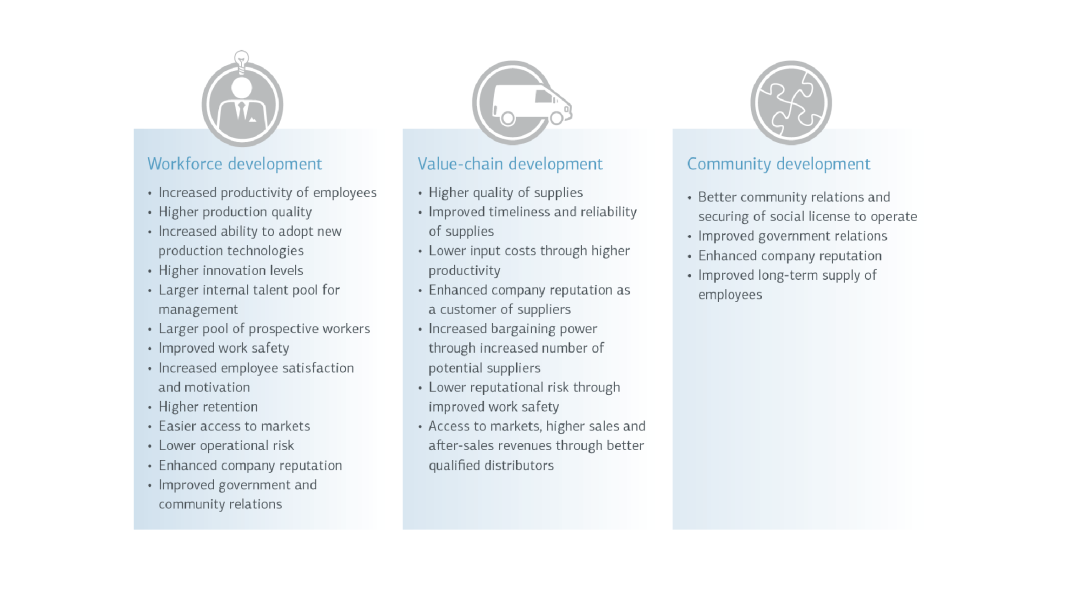More than 200 million people worldwide are looking for jobs. Companies at the same time complain about difficulties in filling vacant positions or in finding suitably skilled staff. These skills gaps – the difference between the skills needed for a job and the capabilities of the workforce – represent a major constraint on social and economic development particularly in developing countries. Chapter "Why skills matter"
The study "Bridging the skills gaps in developing countries: A practical guide for private sector companies", recently published by DEG, takes a look at how private entrepreneurs can close these skills gaps through appropriately targeted measures implemented at the workforce, suppliers and local communities. This study was produced within the framework of the international "Let’s Work Partnership" as a contribution by European development financiers in collaboration with The Boston Consulting Group. It includes a detailed practical guide in addition to a self-assessment matrix for companies.
The study proves that employees are not the only beneficiaries from measures for bridging skills gaps; companies and their immediate environment benefit too. The measures boost staff productivity, product quality, innovations, job security, employee satisfaction and motivation and the image a company has. In addition, bridging skills gaps along the value-added chain leads to lower purchase prices for production materials and smooth workflows. Ultimately, bridging skills gaps with local populations means a stronger anchoring of businesses in communities and subsequently a wider acceptance in society.

The study provides examples of proved approaches along the entire HR chain. The identified and demonstrated Good Practices in the areas of planning, recruiting, performance measuring and evaluating, apprenticeships and training, staff involvement/retention and leadership show how skills gaps can be bridged successfully beyond training measures.
Chapter "Good practices - How companies have successfully addressed their skills gaps"
For practitioners who are facing skills gaps the Practitioners Guide provides a six-step guide to bridge them. It shows you how to identify your company's skills gaps qualitatively and quantitatively, analyze their root causes, address them adequately and efficiently, and showcasing their benefits for your company and your employees, but also for the community. This way, the Practitioners Guide can also help you foster your company's reputation and relations with government and community.
Chapter "A guide for practitioners - How to bridge skills gaps step-by-step"
The case studies present in detail how five of DEG clients from different sectors in Asia, Latin America and Africa successfully addressed their skills gaps by using a variety of HR instruments.
Share page
To share the content of this page with your network, click on one of the icons below.
Note on data protection: When you share content, your personal data is transferred to the selected network.
Data protection
Alternatively, you can also copy the short link: deginvest.de/s/endBZHc_
Copy link Link copied